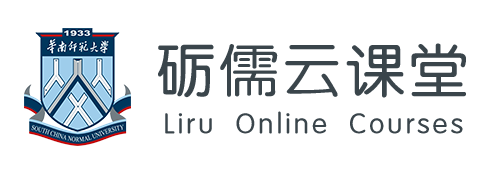
|
第二单元 教学系统 Instructional System |
 内容解析 内容解析
|
1 . Instructional Systems(教学系统)1.1 The definition of Instructional Systems An instructional system consists of a set of interrelated components that work together, effectively and reliably, within a particular framework to provide learning activities necessary to accomplish a learning goal. There are many types of instructional systems, for example, classroom course(face-to face), broadcast course(radio and TV), self-instructional package(self-study), web-based instruction(intranet/Internet),laboratory activities, workshop, seminar,field trip, computer courseware(computer-based training/desktop multimedia), and teleconferencing. Instructional system is a special type of system. So it also have some interrelated components. 教学系统可以分成几大类:课堂教学(实时,面对面的)、广播课程 (电视和广播)、自学包(自学)、网络教学(内部互联网 / 因特网)、实验室活动、专题讨论( workshop )、研讨班( seminar )、参观访问、计算机课件(基于计算机的培训 / 桌面多媒体系统)和远程会议系统。 |
|
1.2 Components of an Instructional System There are two main opinions about the components of an instructional system. The first opinion views that instructional systems include three components, they are teachers, learners, and environment; the other opinion views the instructional systems should be composed of four components, they are teachers, learners, instructional media, and instructional content. Differ with those two opinions, we divided the components of instructional systems into four part: objectives, communicate(method, media, materials and equipment), environment, and people. |
|
(1) Objectives: Just as the other system, instructional systems have their own special audience, so instructional systems should aim to have a particular effect on them. It means that every instructional system has their own objectives. The objective is what you want to teach and/or what the student wants to learn. The objective will often indicate the nature of the message and learning activities. 教学目标(知识、技能和态度的发展),是教师要教、学生要学的内容,它决定着教学中使用什么样的传播信号,安排什么样的教学活动。 |
|
(2) Method, Media, Materials and Equipment: Instruction is a communication process, so, we usually consider how can we transfer the information, how people receive, and how display the content , and so on. Usually, we prepare the materials, and choose the method, media, equipment to display the materials. • method. In chapter 1, we have discussed some useful methods(discussion, cooperative learning, games, role play, discovery and so on). Those methods lead to the different activities in classroom. • media and materials. In classroom, when we incorporate many of these methods into our instructional process, we usually need some media. In chapter 1, we have learned that there are 6 types of media in instruction(text, audio, visuals, motion media, manipulative and people). Please pay attention that different media fit to different methods and materials. For example, when we choose the audio in our classroom, you know, we will prepare some audio recordings such as audio cassettes, CDs, and so on; but if we choose the people as a media in our classroom, it will be a presentation in the instruction which depends on teacher’s voice. 此处的媒体指第一章涉及到的:文字、声音、视觉画面、动画媒体、操作性媒体和人,他们通过特定的教学材料来呈现,如印刷材料、录像、录音、计算机程序、投影胶片等。 • equipment. Materials cannot be used by themselves. They usually require some equipment such as computers, satellite networks,TV set, telephone lines,display surfaces, and so on. |
|
(3) Learning environment: The learning environment is the setting or physical surroundings in which learning is expected to take place. Learning can take place in a variety of setting in a addition to the classroom. It also occurs in the laboratory, library,media center, playground, and even at home. When we consider the instructional environment, we should consider the size, layout, lighting, and seating arrangement, among other things. 教学环境就是学习发生的场景或物理空间,学习可以发生在任何场景,如实验室、图书馆、媒体中心操场甚至是在家里。 |
|
(4) People: People are not only the special type of media in instruction, but also the most important component in instructional system. In instruction, people means the learners and teachers. Learner is the center of instruction(classroom). Teachers include the professor, trainer in business, media specialist, and others. |
|
|
|
1.3 Characteristics of an Instructional System (1) One-way receptive & two-way interaction(单向接受式和双向交流式) Instruction is a communication process which based on the message. Sometimes, students read the book by themselves or organize a presentation in the classroom. They are all belong to the “one-way receptive” pattern. Except one-way receptive, there is also the “two-way interaction” in instruction, for example, communication with other students and the instructor. Compare those two patterns, we can find that in one-way receptive pattern, learners communicate with himself/herself; but in two-way interaction, learners communicate with other people. 单向接受式(听教师讲授或阅读),双向交流式(与其他学生或教师交流)。 |
|
(2) Synchronous & asynchronous (同步和异步) ① Synchronous means that occurring or existing at the same time. So synchronous instruction is when learners must be present for the instructional at the same time. Examples would include a classroom presentation or a live television broadcast. Synchronous instruction is of two types: 同步教学指为了教学过程,所有学生必须同时出现,同步教学有两种类型: • The first is live, face-to-face, as in the classroom example; It occurs at the same time and the same place for all learners; 像课堂教学那样,实时的,面对面的教学,所有学生必须在同一时间出现在同一地点。 • Distance learning, which takes place at the same time, but the learners can bein different places. 远程学习,学习者同时,但是在不同地点学习。 ② Asynchronous is the opposite of synchronous, means occurring or existing at the different time. Asynchronous instruction allows different learners to experience the same content at different time, for example, learning by book or packaged instruction, and even the instruction that delivered by courseware and videotape. 异步学习允许学生在不同的时间学习相同的内容,书是最早的异步教学例子。 As we design the instructional systems, we should consider the other characteristics carefully, for example, the group size(large, medium, small, individual), time(same time,different time), and location of the learners(same location,different location). |
知识点一:教学系统
Top Block Position
知识点一:教学系统
Conditions d’achèvement
Modifié le: vendredi 18 septembre 2015, 19:42
Bottom Block Position

